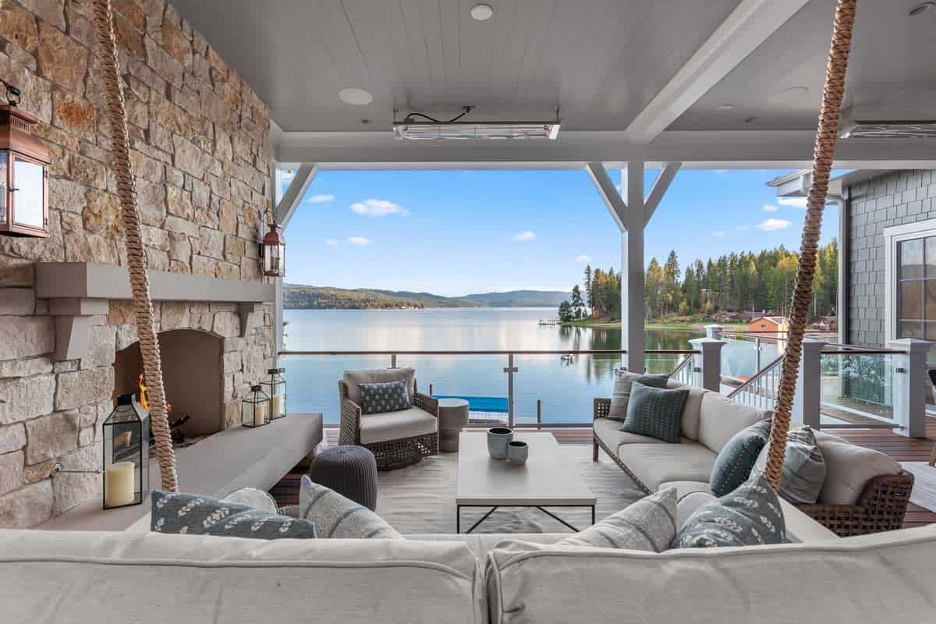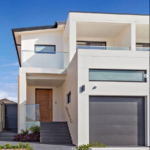Eco-Friendly Innovations in Waterfront Home Design
Waterfront living offers unparalleled beauty and tranquility, but it also presents unique environmental challenges. As climate change intensifies, the need for sustainable and resilient waterfront home designs has become more pressing. Innovative architects and designers are embracing eco-friendly solutions that not only minimize ecological footprints but also enhance the longevity and comfort of these properties.
1. Harnessing Renewable Energy Sources
Integrating renewable energy systems is paramount in modern waterfront homes. Solar panels are commonly installed on rooftops to capture sunlight, converting it into electricity. Wind turbines are also being explored, especially in areas with consistent wind patterns, to generate additional power. These systems reduce reliance on non-renewable energy sources, leading to lower utility bills and a reduced carbon footprint.
2. Utilizing Sustainable Materials
The choice of building materials significantly impacts the environmental footprint of a home. Sustainable materials such as reclaimed wood, bamboo, and recycled metal are gaining popularity. These materials not only reduce waste but also offer durability and aesthetic appeal. Additionally, innovations like algae-based bricks and oyster shell composites are emerging, offering biodegradable and carbon-absorbing alternatives to traditional construction materials.
3. Implementing Smart Water Management Systems
Water conservation is crucial in waterfront properties, where water resources are abundant but can be easily polluted. Smart irrigation systems that adjust watering schedules based on weather conditions help conserve water. Rainwater harvesting systems collect and store rainwater for non-potable uses, reducing the demand on local water supplies. Additionally, greywater recycling systems treat and reuse water from sinks and showers for irrigation, further promoting water efficiency.
4. Designing for Climate Resilience
Coastal areas are increasingly susceptible to rising sea levels and extreme weather events. Designing homes to withstand these challenges involves elevating structures above potential flood levels, using materials resistant to corrosion and moisture, and incorporating breakwaters or natural barriers to protect against storm surges. Landscaping with native plants that can withstand saline conditions and provide natural erosion control is also an effective strategy.
5. Incorporating Green Roofs and Living Walls
Green roofs and living walls are innovative ways to integrate nature into urban waterfront properties. These installations provide insulation, reduce the urban heat island effect, and promote biodiversity. They also help manage stormwater by absorbing rainwater, reducing runoff, and improving air quality. Incorporating native plant species into these green spaces ensures that the vegetation is well-suited to the local climate and requires less maintenance.
6. Adopting Modular and Floating Home Designs
Modular and floating homes offer flexibility and adaptability in waterfront living. Modular homes can be easily expanded or reconfigured to meet changing needs, while floating homes can rise and fall with water levels, reducing the risk of flood damage. Both designs allow for a smaller environmental footprint during construction and offer the potential for relocation if necessary.
7. Enhancing Energy Efficiency with Passive Design
Passive design principles focus on optimizing a building’s orientation, insulation, and natural ventilation to reduce energy consumption. Strategically placing windows to maximize natural light, using thermal mass to regulate indoor temperatures, and designing layouts that promote cross-ventilation can significantly decrease the need for artificial heating and cooling. Incorporating thermal insulation and reflective materials further enhances energy efficiency.
8. Promoting Sustainable Transportation Options
Encouraging sustainable transportation is an integral part of eco-friendly waterfront living. Providing electric vehicle (EV) charging stations, bike racks, and access to public transportation options reduces reliance on fossil fuels and promotes a healthier lifestyle. Incorporating pedestrian-friendly pathways and waterfront promenades encourages walking and cycling, enhancing the overall livability of the area.
9. Integrating Smart Home Technologies
Smart home technologies enhance the efficiency and convenience of waterfront properties. Automated systems can control lighting, heating, cooling, and security, optimizing energy use and reducing waste. Smart meters monitor energy consumption, providing homeowners with insights to further reduce their environmental impact. Integration with mobile apps allows for remote control and monitoring, offering flexibility and peace of mind.
10. Engaging in Community-Based Sustainability Initiatives
Sustainability extends beyond individual properties to the broader community. Engaging in community-based initiatives such as local clean-up events, shared renewable energy projects, and educational programs fosters a collective commitment to environmental stewardship. Collaborating with neighbors and local organizations amplifies the impact of sustainable practices and builds a resilient community.
Conclusion
Eco-friendly innovations in waterfront home design are transforming the way we live by harmonizing luxury with sustainability. By embracing renewable energy, sustainable materials, climate-resilient designs, and smart technologies, homeowners can create spaces that are not only beautiful and functional but also responsible stewards of the environment. As these innovations continue to evolve, the future of waterfront living looks brighter and more sustainable than ever.








